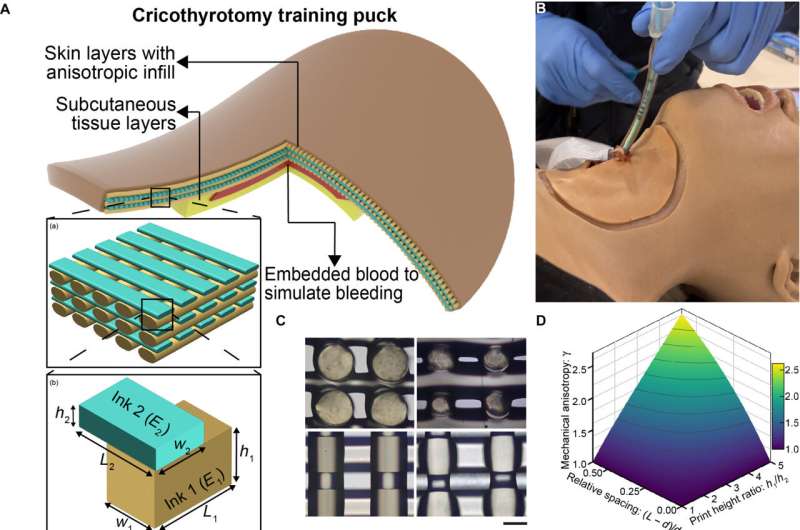Previous methods have made stiff, simple tissues, but this new technique can mimic the complex, directional strength and stretchiness found in real tissues like skin or other organs.
In this paper, the researchers discovered a method to control the shape and size of the tiny patterns inside the 3D-printed material, thereby imparting specific mechanical properties. Along with this, they made a mathematical formula to predict how the tissue would behave.
To make the simulated tissues more realistic, they also developed a way to incorporate blood-like liquids in a single step. This is done by printing small microcapsules that contain the liquid, preventing it from drying out or interfering with the printing process.

